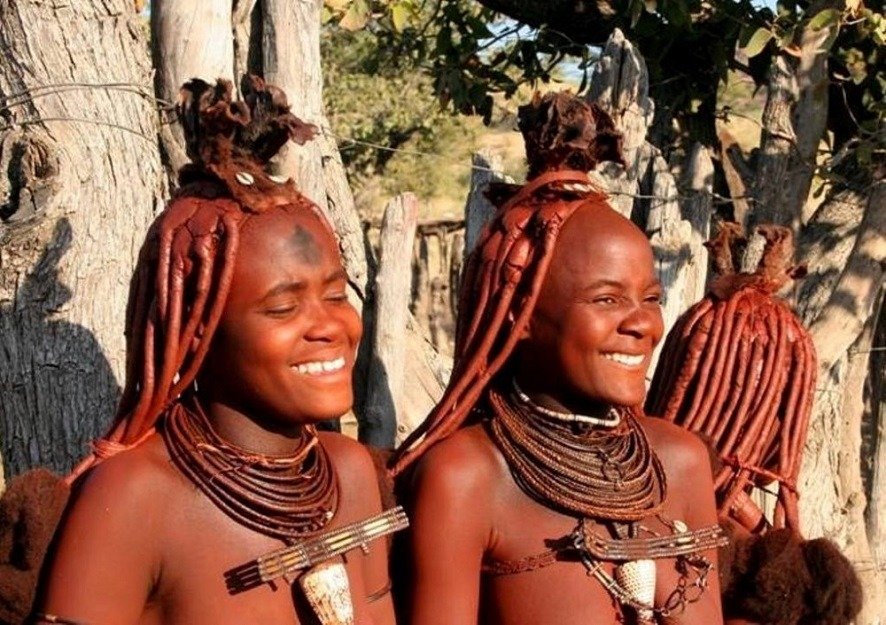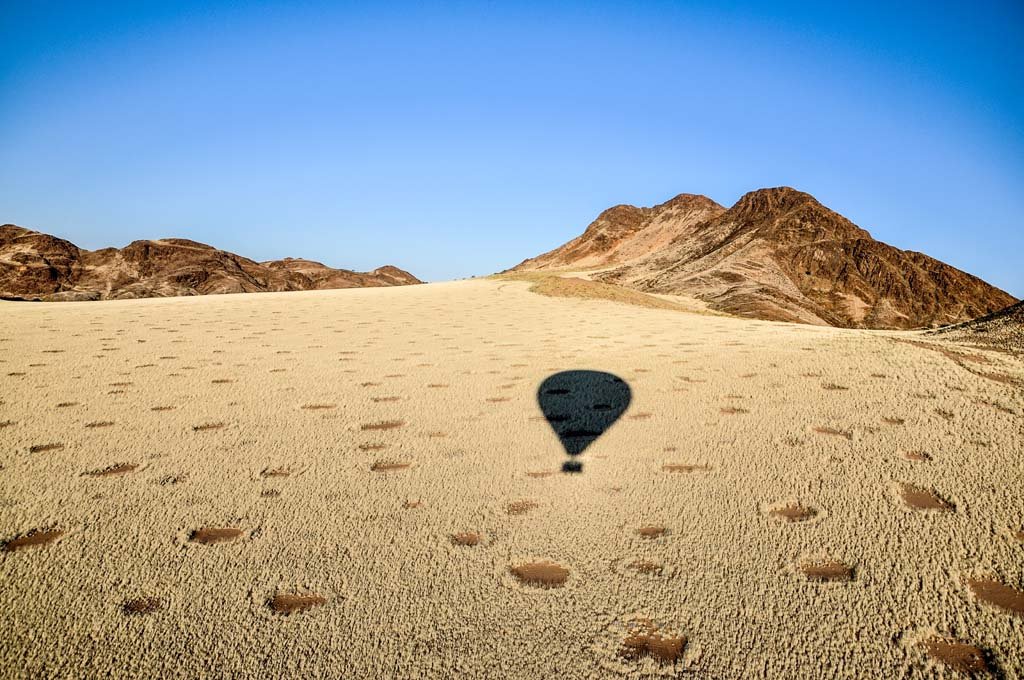
Travelling in the Deserts of Namibia
Travelling in the deserts of Namibia and Wildlife Safari.

Travelling in the deserts of Namibia is soul-stirring. Namibia on the southwest edge of Africa, it shares borders with Angola and Zambia in the north, Botswana in the east, and South Africa in the south. The western part of the country faces the Atlantic Ocean.

Namibia is home to two major deserts, the Namib Desert, and the Kalahari Desert. The orange sand dunes rise a thousand feet high against a cobalt sky. The coastal desert is washed by the relentless ocean, while inland the sun bakes the plains into a cracked puzzle of dried mud, pocked with grass and thorn bush.

There is water here, though its presence is subtle. It is the source of life in the stark salt pans, whose waterholes attract fantastic numbers of wildlife, including rare rhinos and feline predators. Springbok, oryx, kudu and dik-dik run to elude them, in a wild and ancient desert dance.

Its total population is only 2.5 million people, which makes it one of the least populated countries in the world. The largest city in Namibia is its capital city, Windhoek.

It seems that internationals travelling in the deserts of Namibia have developed a long-standing love affair with this large, sparsely populated country in the South Western reaches of Africa, making the tourism industry in Namibia one of the biggest money-spinners in the country.

It is no real surprise that the Namibian tourist industry is a thriving one. With unique scenic landscapes to admire and a history of dedicated conservation efforts, this young African country holds many attractions for the foreign, as well as domestic, travellers.

13 DAYS SAFARI IN NAMIBIA (SELF DRIVE OR GUIDED SAFARI)
Safari & Tours
Whether you set out on your own self-drive safari or join a group of like-minded travelers, Namibia is Africa’s best-kept safari destination secret.

Travelling in the deserts of Namibia, you have the opportunity to venture into the unknown and yet be completely safe. Visitors can take in the beautiful wildlife and unique landscapes at their own pace, on their own terms. Like nowhere else in Africa, Namibia provides the visitor the opportunity to escape stress, experience peace and freedom, sit and admire the breathtaking landscapes and reflect. From game-packed parks to the silence and spectacle of the desert, this incredible country, its landscapes, people and wildlife are waiting.
See our Namibia self-drive packages here
12 DAYS SAFARI IN NAMIBIA SELF DRIVE OR GUIDED SAFARI

Guests embark on their safaris with a feeling of excitement and confidence. Namibia has a stable, democratic government and the country is renowned for the quality of its infrastructure which includes a superb road network, broad cell phone coverage, accommodation and camping choices for every interest and budget and people who are amongst the most friendly and helpful in the world.
Namibia is a land of stark contrasts, where towering dunes meet a tempestuous coastline. As it should be in a land of such contrasts, Namibia offers an endless variety of safari options. Experience the haunting silence of the Kalahari Desert and spot one of 430 bird species in the Caprivi region, search for desert elephants in Damaraland and interact with the astonishing Himba community in the remote Kaokoveld.


Here travelers have the opportunity to see Africa’s Big 5 and numerous endemic species against the backdrop of the country’s unique landscape. Namibia is the last place on earth where black rhino roam free across communal land, and is one of two countries in the world that are home to the desert-dwelling elephant.
The country holds the largest free-roaming population of cheetahs in the world, with one-quarter of the world’s cheetah population stalking the arid plains. Animals such as gemsbok (Oryx), springbok, bat eared fox, ostrich and black backed jackal are all seen on a regular basis making a Namibia safari different than any other wildlife country in Africa.
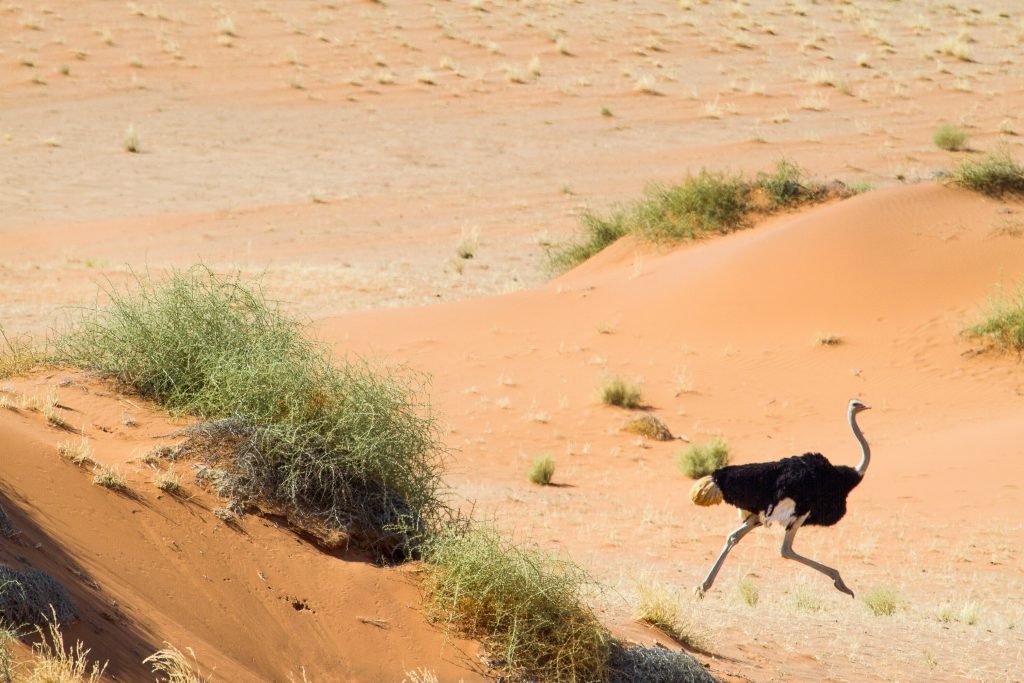
Flights
Most visitors enter Namibia at Hosea Kutako International Airport located 45km east of Windhoek. International flights arrive multiple times throughout the week from Johannesburg and Frankfurt via a number of carriers including Air Namibia.
Other airlines with scheduled flights to Namibia include British Airways, South African Airways, LTU, Qatar Airways, Ethiopian Airways and TAAG, the Angolan national airline.
The airport terminal offers a bevy of shops and restaurants, also ATM’s and other helpful services, including taxi and shuttle transportation that is also available to and from Windhoek.
Flight Times:
To Windhoek from Addis Ababa . Approximately 6 hours
To Windhoek from Frankfurt. Approximately 11 hours.
To Windhoek from the USA via South Africa. Approximately 19 hours.
To Windhoek from Johannesburg/Cape Town. Approximately 2 hours.
To Windhoek from London. Approximately 12 hours.
Domestic Flights
From Hosea Kutako International Airport, you can fly Air Namibia to the following domestic destinations:
Walvis Bay International Airport
Luderitz Airport
Oranjemund Airport
From Eros Airport in Windhoek, Air Namibia flies to:
Ondangwa Airport
Rundu Airport
Mpacha Airport
The Main Attractions in Namibia include:
• The oldest desert in the world and a world heritage site – The Namib
According to scientists, Namib Desert is over 55 million years old! The desert is also quite large, stretching for 2000 km along the Atlantic coasts of Namibia, South Africa and Angola.


• Etosha National Park (A salt pan that is visible from outer space)
The Etosha National Park is a nature conservation area in northern Namibia and is one of the most significant game reserves in Africa. In Namibia it is by far the best known and most important national park. Today the Park covers an area of nearly 22.912 km² and is completely fenced for the protection of the animals.
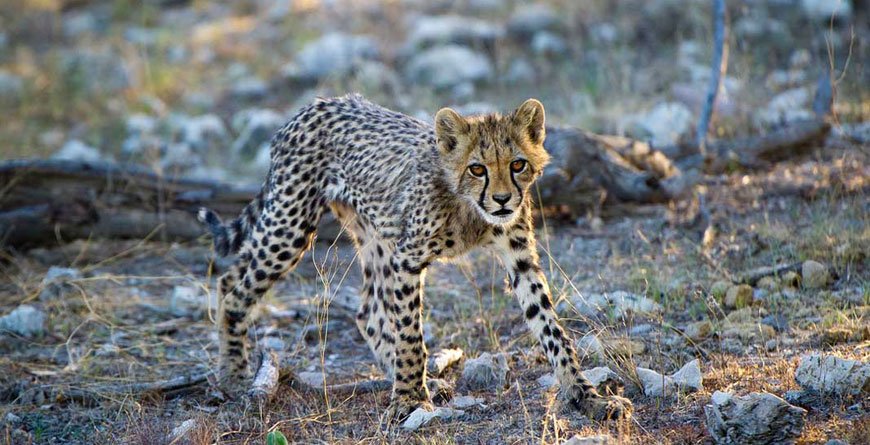

Some of the most important game species are elephant, rhino, giraffe, lion, leopard, cheetah, mountain and plains zebra, springbok, black faced impala, eland, warthog and many other mammals. A large number of bird and reptile species can be found as well.

• The picturesque Fish River Canyon.
The vast Fish River Region with its impressive landscapes is situated in the far south of Namibia and stretches from the South African border up to the small town of Aus in the south-west and further to Keetmanshoop in the south-east of Namibia.

The region is dominated by the Fish River Canyon, who with its 161 km length, up to 27 km of width and 550m of depth is the second largest canyon worldwide after the Grand Canyon in the USA.
• Sossusvlei
The Sossusvlei Region is situated in south-western Namibia and is characterised mainly by the Namib Naukluft Park and its highlight Sossusvlei and Dead Vlei. The Region is very diverse with the breath-taking Namib Desert – the oldest desert in the world – to the west and the Great escarpment forming a natural barrier between the Namib Desert and the central highlands to the far east.


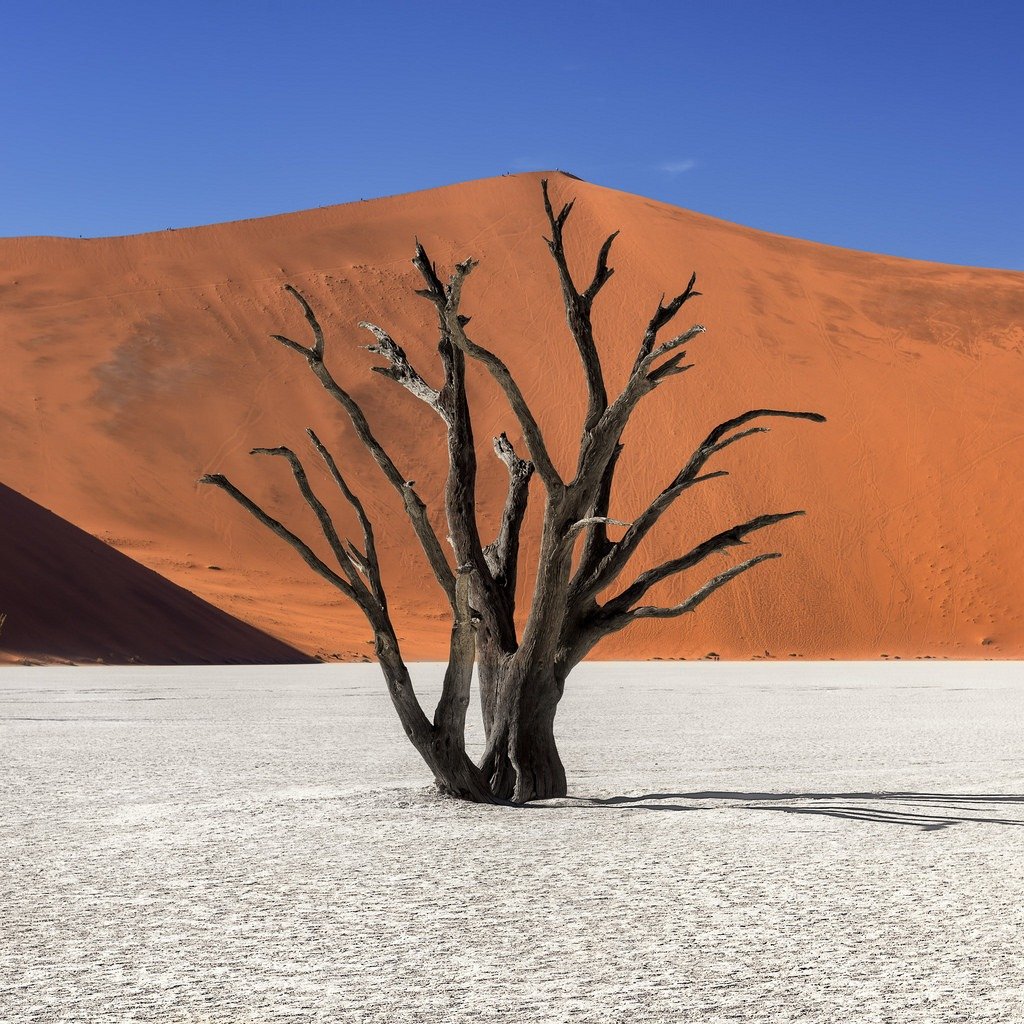
Many endemic animal and plant species call the Namib their home. They have adapted perfectly to the heat. Many desert inhabitants make use of the fog which every now and then emerges from the Atlantic Ocean. This is often the only source to humidity and vital for the survival of many.


The oryx antelope which often can be found deep in the desert has developed a unique system to cool down its blood. Thanks to a fine network of blood vessels the brain is cooled and thus the animals can handle a body temperature of more than 40°C for longer periods.
• The flourishing wilderness of the Caprivi Strip.
The Caprivi Strip is situated in the north-east of Namibia and unlike the rest of the country is blessed with good rainfalls. The name Caprivi or Caprivi Strip is still in common use although the region had been officially renamed to Zambezi in 2013.

Thanks to the abundance of water the Caprivi boasts a special and diverse flora and fauna. Vast areas of this region are nature conservation areas. Three national parks are found here namely the Bwabwata, Mudumu and Mamili National Park.

Animal species to be found: Elephant, buffalo, hippo, crocodile, lion, leopard, African wild dog, sable and roan antelope, waterbuck, sitatunga, lechwe, bush buck, zebra, kudu, impala and about 450 bird species.
• The desolate Skeleton Coast(The world’s largest ship cemetary)
The Skeleton Coast is a 40 km wide and 500 km long coastal stretch in Namibia, a hostile but fascinating area. Here the cold and unpredictable Benguela Current of the Atlantic Ocean clashes with the dune and desert landscape of north-western Namibia.

The name Skeleton Coast derived most probably from the huge numbers of stranded whales that lost their life here and whose skeletons could be seen all over the place. The Ovahimba who are settling in the far north-eastern parts of Namibia used the whale bones for building their huts.
Numerous ships have stranded at the Skeleton Coast thanks to the thick fog, the rough sea, unpredictable currents and stormy winds. The sailors who were able to make it to the land did not stand a chance of survival at this inhospitable coast and died of thirst.

Despite the hostile character of the Skeleton Coast, there are quite a number of wild animals to observe, for example desert-adapted elephants, rhinos, desert lions, brown hyenas, jackals, giraffes, seals, oryx, kudus and zebras.

Also some plants are incredibly adapted to the rainless area of the Skeleton coast and depend solely on the daily fog from the Atlantic Ocean:
• The hot springs at Ai-Ais
Ai-Ais (or /Ai-/Ais which means “burning water” in one of the local languages), refers to the sulphurous hot springs which are found in this area.

• Swakopmund
Sandwiched between Atlantic rollers and the Namib Desert,

Swakopmund is one of those great traveller way stations along the African road. At once Namibia’s adventure capital and a surreal colonial remnant, part destination in its own right and part launch pad for an exploration of the Skeleton Coast and Namib Desert, this is a city with as much personality as it has sea frontage

The beaches are one of Swakopmund’s top attractions
Swakopmund serves mainly as a holiday resort and is thus of touristic importance. Swakopmund is known as activity centre of Namibia, nowhere else in the country travelers will find such a variety of possible activities. There is an uncountable number of guesthouses, bed & brekfasts, hotels and self-catering accommodations in Swakopmund.
In Swakopmund the visit of the sea front, the aquarium and the Swakopmund Museum is worthwile. There are numerous boulevards and a large traditional street market where travellers can buy souvenirs.

In close vicinity of Swakopmund (and Walvis Bay which is located 30 km south of Swakopmund) a lot of acivities can be done, amongst other things boat tours with a seal whisperer, exciting desert tours (“The desert is alive”), quad bike safaris, kayaking tours and much more.
• Damaraland
The „Damaraland“ is part of the Kunene Region in the north-west of Namibia and is located between the Brandberg and the little village of Sesfontein. The Damaraland is characterised by its rocky and rugged landscapes of rough, fascinating beauty.
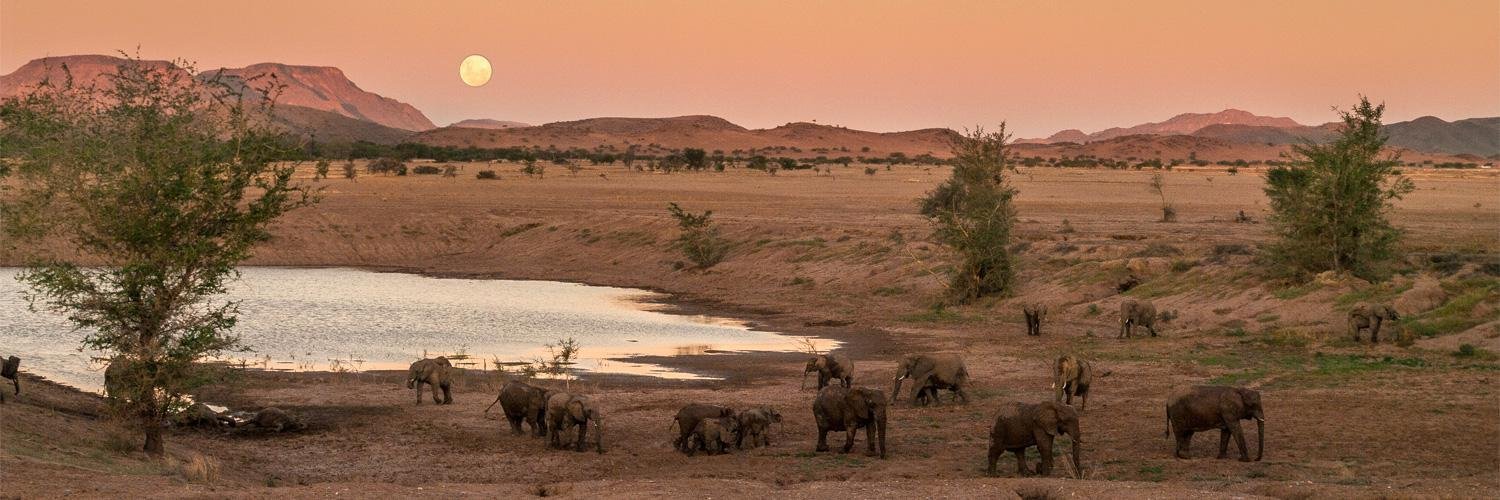
From the glorious rock formations of Spitzkoppe, Erongo and the Brandberg in the south to the equally glorious red-rock, wild-desert mountains around Palmwag in the north, Damaraland is one of Namibia’s most dramatic collections of landscapes.

Hidden in the rocky clefts is Twyfelfontein, which along with the Brandberg contains some of Southern Africa’s finest prehistoric rock art and engravings, and there’s even a petrified forest nearby, as well as palm-fringed, oasislike valleys.
Damaraland is also one of Southern Africa’s most underrated wildlife-watching areas. One of Namibia’s last ‘unofficial’ wildlife regions, it’s home to critically endangered black rhinos, desert-adapted lions and elephants, as well as the full range of Namibia specialities such as gemsbok, zebra, giraffe and spotted hyena.


The flora and fauna of the region have adapted perfectly to the harsh weather conditions of high heat and persiting droughts. Here you find the desert-dwelling elephants who with elongated limbs and broader soles are able to handle the extreme rock and sand desert better and can travel for kilometres in the dry river beds in search of water.
• Cape Fur Seals
Cape Cross is a Cape Fur Seal Beach with an interesting history of a stone cross on the bleak headland – put up, in 1485, by a Portuguese captain and navigator, Diego Cão.

Cape Cross Seal Colony, in Namibia, is the breeding place of the Cape Fur Seals, which are actually a species of Sea Lion. Along the Namibian and South African coast there are 24 colonies with a seal population of about 650 000 animals. About 80 000 to 100 000 seals inhabit Cape Cross.

Fur Seals are very soft
These Fur Seals are so-named for their thick pelt. Unlike true seals which have only a thin covering of hair, Fur Seals have a thick layer of short soft fur, which is protected by a layer of longer, harder hair. The top layer gets wet, the bottom layer stays dry. The bottom layer, as well as the fat formation under the skin give seals a good isolation against the cold Benguela current.
• The Wild Horses.
An attraction in the southern part of the Namib are the Feral Horses of Garub. These horses have successfully bypassed their role as working or breeding horses. They are independent of humans (more or less) and they fascinate us with their adapted live in a very inhospitable area and infinite freedom.

They roam the sparsely vegetated plains of the Namib Desert in small groups: the Wild Horses. Over the decades they have conquered the desert as their habitat. They come to drink from the trough at Garub, some 20 km west of Aus. From a hide you can watch the horses and take pictures.

Normally wild horses are not found throughout southern Africa as the climatic conditions are not typical for horses to live in. Horses were only introduced by European immigrants with the colonization of southern Africa. Thus the question arises where these horses come from and why they chose to settle here, where temperatures soar and were food is scarce and hard to find.

Theories regarding the origin
Different theories regarding the origin of these horses exist. It is certain that the horses are no true wild horses, but that they originate from domestic horses.

• The Himba Tribe
The Himba tribe in the Kunene region of the country have strongly clung to their traditional ways and beliefs.

They wear traditional clothes, eat traditional foods and even practice traditional religions. The women wear skirts and leave their upper body bare. Basically, they have been unaffected by modernism in any way.
Another interesting tradition that has stood the test of time is the “bathing is forbidden” rule. Rather than take their baths, the women take a smoke bath and apply aromatic resins on their skin. They are also guided by the belief that the colour red signifies “Earth and blood”. Their red skin is one of the things that make them extremely unique. The red colour is from the otjize paste (a combination of butterfat, omuzumba scrub and ochre) and its function is to protect their skin from the harsh desert sun and insect bites.
• Birding
There are around 700 species of birds in Namibia! Its most likely every day that you will be in Namibia you would see some kind of different bird. And of course many are so colorful, and with long bright feathers.

• Windhoek, Namibias best beer!

Namibian beer is brewed to the highest German standards and Namibians are passionate about their beer!
Apart from these obvious attractions there are many and varied activities to partake of like hot air ballooning, sky diving, caving, horse riding, wildlife safaris, dune boarding, camel riding, quad biking, hiking, fishing and tours to visit amazing archaeological sites and unique desert fauna and flora.

People use all sorts of words to describe it: vast, endless, magnificent, unimaginable, among others. Good words as far as words go, but they don’t really do Namibia’s top attractions justice. There simply is no frame of reference, nothing that comes close to seeing the sunset at Sossusvlei, spending the day playing at Swakopmund or visiting the Himba in Damaraland.
You have to experience it yourself. And then encourage others to do the same.
Quick links:
Ministry of Environment and Tourism Namibia
Namibia Nature Foundation
Hospitality Assocciation of Namibia






